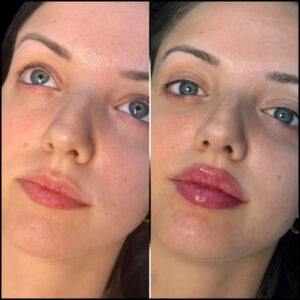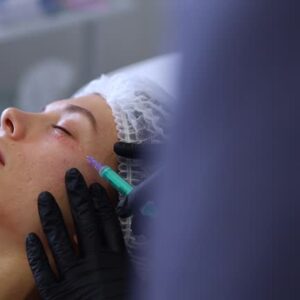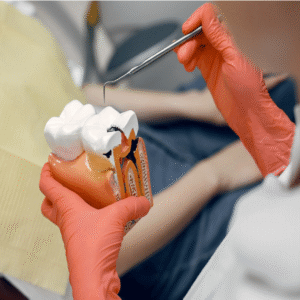Hair loss can significantly impact self-esteem and confidence, prompting many individuals to seek effective solutions. With a variety of hair restoration options available today, patients are often overwhelmed by choices, costs, and procedures. One innovative approach that has garnered attention is the concept of a “1 Dirham Hair Transplant.” This seemingly unbeatable offer aims to make hair restoration accessible and affordable for all, but what exactly does it entail? In this comprehensive guide, we will explore the key aspects of 1 Dirham Hair Transplant in Abu Dhabi, including what to expect, the process involved, and frequently asked questions.
What Is a 1 Dirham Hair Transplant?
A 1 Dirham Hair Transplant is a promotional or symbolic term used by clinics to attract prospective patients. It suggests a highly affordable or subsidized hair transplant procedure, often emphasizing affordability to encourage individuals facing hair loss issues to consider treatment options. While the name might imply an extremely low price, it’s essential to understand that the actual process involves standard medical practices designed to meet individual patient needs.
This approach aims to demystify hair restoration, making it accessible without the prohibitive costs often associated with such procedures. The term “1 Dirham” is symbolic of affordability rather than an exact fee, representing a commitment to providing quality hair restoration at a fraction of traditional prices.
Does a 1 Dirham Hair Transplant Include Consultation?
Many prospective patients wonder if initial consultations are part of the 1 Dirham Hair Transplant package. Typically, clinics offer a free or nominal consultation as an integral part of the treatment plan. This consultation involves assessing the individual’s hair loss pattern, scalp condition, and determining suitability for the procedure.
During this session, medical professionals evaluate the extent of hair loss, discuss expectations, and create a personalized treatment plan. It’s an opportunity for patients to ask questions, understand the process, and learn about post-treatment care. While the promotional price often covers the procedure itself, clinics may charge separately for consultations or include them as part of the overall package.
The Procedure: What Does a Hair Transplant Involve?
Understanding the steps involved in a hair transplant can help alleviate concerns and set realistic expectations. The procedure generally involves the transfer of healthy hair follicles from one part of the scalp (donor area) to the balding or thinning areas (recipient area).
Step 1: Preparation and Planning
Prior to the procedure, the medical team conducts a thorough scalp analysis, marking the areas to be treated, and planning the number of grafts required. This planning ensures the natural appearance of the transplanted hair.
Step 2: Anesthesia and Extraction
Local anesthesia is administered to ensure patient comfort. The surgeon then carefully extracts hair follicles through techniques like Follicular Unit Extraction (FUE) or Follicular Unit Transplantation (FUT). These methods involve minimal discomfort and leave minimal scarring.
Step 3: Graft Preparation
Extracted hair follicles are examined and prepared under sterile conditions. The goal is to maximize graft survival and natural growth.
Step 4: Implantation
The prepared grafts are meticulously implanted into the recipient areas, following the natural hair growth pattern. The placement considers angles, density, and direction to achieve a seamless look.
Step 5: Post-Procedure Care
Post-operative instructions are provided to promote healing and optimal results. Follow-up appointments are scheduled to monitor progress.
It’s important to note that the success of the procedure heavily depends on the expertise of the medical team and adherence to aftercare instructions.
Who Is an Ideal Candidate for a Hair Transplant?
Candidates for a hair transplant typically share certain characteristics. Ideal candidates generally have sufficient donor hair that can be transplanted to balding areas, and their hair loss is stable. Good health, realistic expectations, and understanding of the procedure are also important factors.
Individuals experiencing androgenetic alopecia (pattern baldness) with localized hair loss often benefit most from hair transplant procedures. Those with diffuse hair loss or insufficient donor hair may require alternative approaches or additional treatments.
Benefits of Choosing a 1 Dirham Hair Transplant
Opting for a 1 Dirham Hair Transplant offers several advantages:
- Affordability: Making hair restoration accessible to a broader population.
- Natural Results: When performed by skilled professionals, the results appear seamless and natural.
- Minimally Invasive: Techniques like FUE minimize discomfort and downtime.
- Boosted Confidence: Restoring hair can significantly improve self-esteem and overall quality of life.
- Customizable Treatment: Procedures are tailored to individual hair loss patterns and goals.
This approach aims to balance affordability with quality, ensuring patients receive effective treatment without financial strain.
What to Expect During Recovery
Recovery after a hair transplant typically involves minimal discomfort and manageable care. Patients may experience mild swelling, redness, or scabbing in the donor and recipient areas, which usually resolve within a few days.
It’s vital to follow post-operative instructions carefully, such as avoiding strenuous activities, refraining from scratching the scalp, and using prescribed medications or shampoos. Hair growth begins gradually, with noticeable results often visible within 3 to 4 months, and full results appearing after 9 to 12 months.
Post-Treatment Care and Maintenance
Maintaining transplanted hair and ensuring long-lasting results require diligent care. Patients are advised to:
- Follow a healthy scalp hygiene routine.
- Use gentle, recommended hair care products.
- Protect scalp from excessive sun exposure.
- Avoid smoking and alcohol, which can impede healing.
- Schedule follow-up appointments for progress evaluation.
In addition to the transplant, some individuals may benefit from supplementary treatments such as medications or PRP therapy to enhance hair density.
Common Myths and Facts About Hair Transplantation
Myth: Hair transplants are painful.
Fact: With local anesthesia and minimally invasive techniques, discomfort is usually minimal.
Myth: Transplanted hair will fall out soon.
Fact: Transplanted hair is permanent, though some shedding during the initial phases is normal.
Myth: Only men can benefit from hair transplants.
Fact: Women experiencing hair thinning can also be suitable candidates.
Myth: The procedure is only for old individuals.
Fact: Age is less important than the pattern and stability of hair loss.
Understanding these facts can help patients make informed decisions about their treatment options.
Frequently Asked Questions
1. Does a 1 Dirham Hair Transplant Include the Entire Procedure?
While promotional offers may suggest affordability, the inclusion of all aspects, such as consultation, procedure, and post-care, varies by clinic. It’s essential to clarify what is covered under the package.
2. How Long Do Results Take to Become Visible?
Initial hair growth can be seen within 3 to 4 months post-procedure. Full results, including density and natural appearance, typically develop over 9 to 12 months.
3. Is the Procedure Suitable for All Types of Hair Loss?
Hair transplants are most effective for pattern baldness with stable donor hair. For diffuse thinning or other conditions, alternative treatments may be recommended.
4. Can I Return to Work Immediately After the Transplant?
Most patients can resume light activities within a few days. However, strenuous activities should be avoided for at least a week, depending on individual healing and medical advice.
Conclusion
The concept of 1 Dirham Hair Transplant Abu Dhabi aims to democratize access to hair restoration by offering affordable solutions. While affordability is a significant advantage, it’s crucial to choose a reputable clinic with experienced professionals to ensure optimal results. Understanding the process, recovery, and realistic expectations can help prospective patients make informed decisions and achieve satisfying outcomes.
If you’re considering hair restoration, consult with qualified specialists to discuss your options and develop a personalized treatment plan that aligns with your goals and needs. Restoring your hair can be a transformative experience, boosting confidence and enhancing quality of life.






